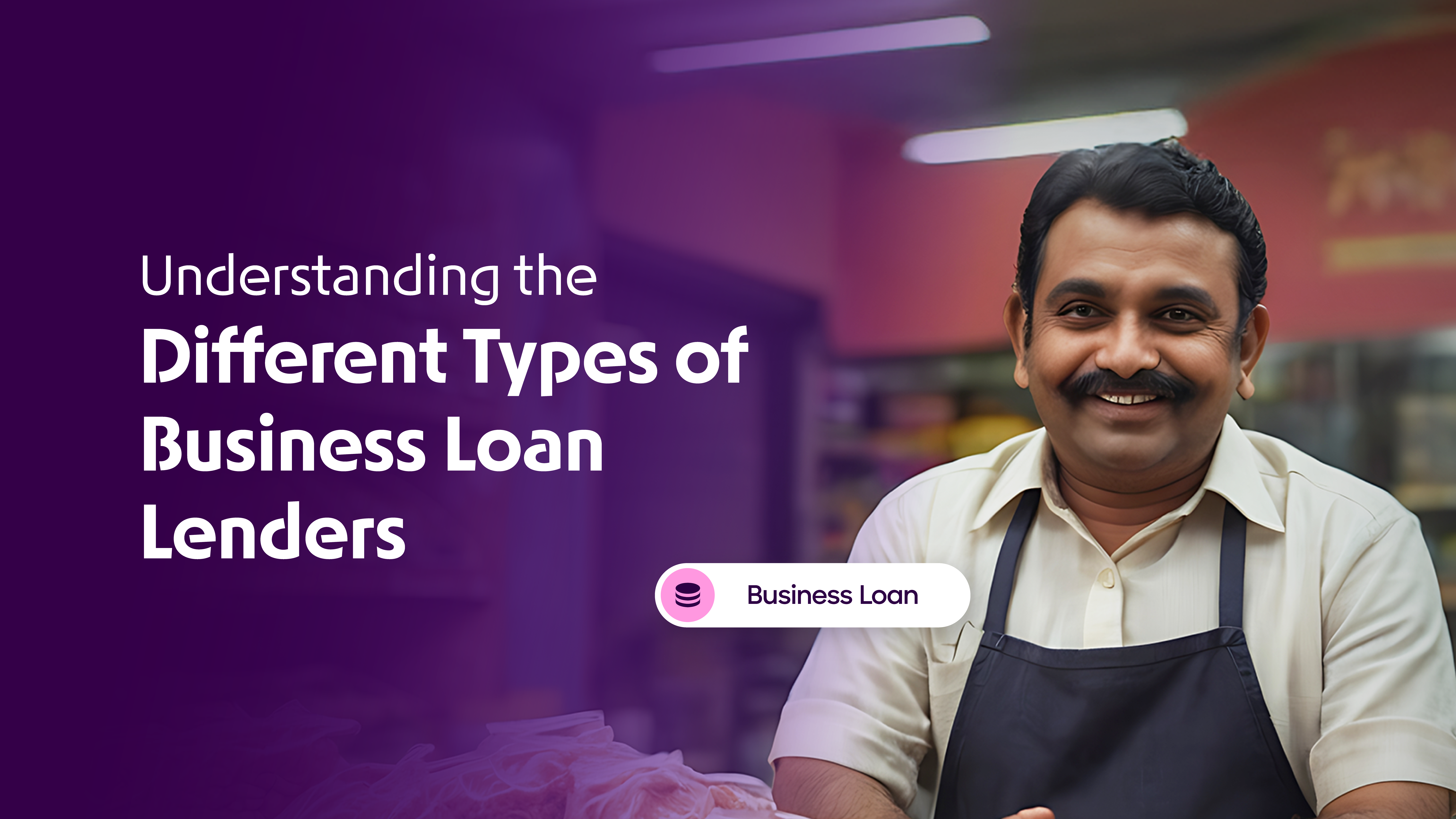Finding the right business loan lender can make all the difference when you’re trying to grow or manage your business. Today, entrepreneurs don’t have to rely solely on traditional banks. A wide range of lenders—from government-backed institutions to digital platforms—offer financing solutions depending on your needs, credit score, and business profile.
This blog explores the different types of business loan lenders, how they work, and what you can expect from each.
1. Traditional Banks
Traditional banks have been the go-to option for business loans for decades. They offer various products such as term loans, working capital loans, and overdraft facilities. However, their approach is more conservative compared to newer lenders.
How They Work
Banks follow strict lending guidelines. They assess business stability, cash flow, and creditworthiness before approving a loan. A strong CIBIL score is crucial when applying to these lenders.
Pros
- Competitive interest rates.
- Long repayment tenures.
- Trust and reliability.
Cons
- Lengthy approval process.
- Extensive paperwork.
- High eligibility thresholds.
Best For
Businesses with stable revenues, good financial records, and a high credit score.
2. NBFCs (Non-Banking Financial Companies)
NBFCs are regulated financial institutions that offer business loans without being full-service banks. Over the years, they’ve become a strong alternative, especially for small and medium-sized enterprises.
How They Work
NBFCs are more flexible in evaluating borrower profiles. They may look beyond just your CIBIL score and consider real-time business performance.
Pros
- Quicker loan processing.
- Less rigid eligibility norms.
- Suitable for semi-formal businesses.
Cons
- Higher interest rates compared to banks.
- Shorter repayment periods.
Best For
Growing businesses that need funds quickly but may not meet all bank requirements.
- Digital Lending Platforms
With the rise of fintech, digital lending platforms in India have made business loans more accessible. These platforms allow business owners to apply online, upload documents digitally, and get approvals faster than ever before.
How They Work
These platforms use automated systems to assess creditworthiness. Some use alternative data, such as transaction history or online sales, to evaluate loan applications. Many of them partner with banks and NBFCs to disburse loans.
Pros
- Fast application and disbursal process.
- Minimal paperwork.
- Collateral-free options available.
Cons
- Interest rates can vary.
- Loan amounts might be lower for first-time borrowers.
Best For
Businesses looking for short-term loans or quick working capital, especially those comfortable with digital processes.
4. Government Schemes and Institutions
There are several government-backed institutions and schemes that support small and medium enterprises. These lenders focus on financial inclusion and entrepreneurship promotion.
How They Work
Such lenders may offer subsidised interest rates or credit guarantees. Examples include sector-specific schemes or loans for underrepresented groups.
Pros
- Lower interest rates.
- Priority for new or underserved businesses.
- Support for women-led and rural enterprises.
Cons
- Slower processing.
- Involves government documentation and procedures.
Best For
First-time entrepreneurs or businesses that qualify for specific subsidy programs or benefits.
5. Cooperative Banks and Credit Unions
These community-based lenders offer loans to members, often with a regional or occupational focus. They are more accessible in semi-urban and rural areas.
How They Work
These lenders operate on trust and familiarity. Approval often depends on local relationships and the borrower’s reputation in the community.
Pros
- Easier access for small businesses.
- Personalised service.
- Flexible terms for local businesses.
Cons
- Limited loan size.
- Regional limitations.
Best For
Businesses in smaller towns or close-knit communities that prefer dealing with local institutions.
6. Loan Aggregator Platforms
Loan aggregators help borrowers compare loan offers from various lenders—banks, NBFCs, and fintech platforms—on a single dashboard.
How They Work
You submit one application with your basic details, and the platform matches your profile with loan offers you’re eligible for. Based on this, you can compare interest rates, processing fees, loan amounts, and repayment terms—before choosing the most suitable lender. Some offers may be pre-approved, while others may depend on final verification by the lender.
Pros
- Save time and effort.
- Easier comparison of offers.
- Access to multiple lenders in one place.
Cons
- May charge a small service fee.
- Lender terms vary.
Best For
Businesses wanting to evaluate different loan options before making a decision.
Choosing the Right Lender
Now that you know the types of business loan lenders available, how do you decide which one is right for you?
Here are a few things to consider:
- Loan purpose: Is it for expansion, working capital, or equipment purchase?
- Loan amount: Different lenders have different limits.
- Repayment capacity: Choose a lender with terms that suit your cash flow.
- CIBIL score: A higher credit score opens doors to more lenders and better terms.
If your CIBIL score is low, focus on lenders that consider alternative credit assessments, like digital lending platforms in India, which may evaluate GST returns, transaction data, or e-commerce sales.
Conclusion
There’s no one-size-fits-all solution when it comes to business loans. Each type of lender serves a specific need. Banks are ideal for established companies with strong credit. NBFCs and digital platforms serve those who need speed and flexibility. Government schemes help small enterprises take their first step. And aggregator platforms make it easier to compare and choose.
The key is to know your business needs, understand what each lender offers, and make an informed choice that supports your growth in the long run.



